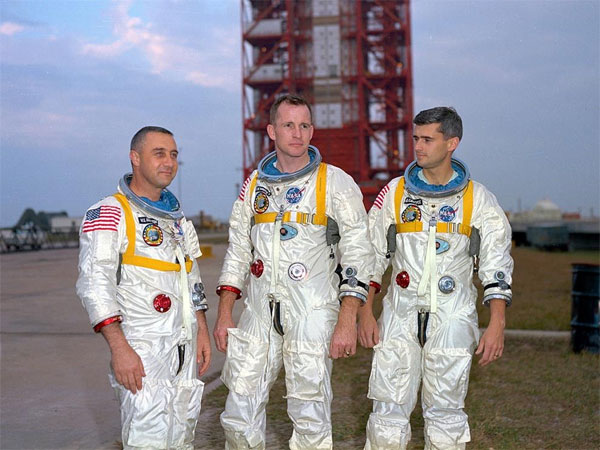Space disasters in NASA history
The Antares missile explosion is not the first defeat in the operation of the US Aviation Space Agency. Previous disasters, whether killed or not, are considered a reminder of the rigors and dangers of the space exploration program.
>>>Disaster in space
Apollo 1 Mission (1967)
Apollo 1 was the first human space exploration mission under the Moon landing program, scheduled to be executed on February 21, 1967. However, a fire in the launch test on January 27 at Cape Canaveral base killed three astronauts. They are Virgil "Gus" Grissom, Ed White and Roger Chaffee.
The fact that the space race between the US Aeronautics Agency (NASA) and the Soviet Union at that time became less intense. Meanwhile, NASA began to change the design and safety of space programs later. The name Apollo 1 was canceled to commemorate the astronauts.

From left to right: Grissom, White, Chaffee.(Photos: Wikipedia)
Mission Apollo 13 (1970)
Apollo 13 is the seventh mission of the American Apollo space program, and the third to set foot on the Moon. The spacecraft was launched on April 11, 1970 from the Kennedy Center, Florida. However, the landing on the surface of the Moon was not possible when oxygen tanks exploded.
The three astronauts survived by escaping the Moon module and returning to Earth with the main spacecraft.

Dust and smoke rose up after the ship exploded.(Photos: Wikipedia)
The space shuttle Challenger exploded after being launched about 73 seconds from the launch center in Cape Canaveral, killing all 7 crew members. The shuttle program was later suspended for nearly three years.
According to the survey results, the gas holder on one of the missile auxiliary engines was inactive, causing compressed air to escape.
Space Shuttle Columbia (2003)
On February 1, 2003, space shuttle Columbia exploded at an altitude of about 19km in the sky of Texas, returning to Earth after a 16-day flight. The disaster occurred about 16 minutes before the ship landed on the Kennedy Center as planned, causing seven astronauts to die. This is considered one of the most traumatic events in NASA history
According to investigators, the ship's left wing was broken when the insulating piece fell out of the external fuel tank and hit while the ship was launched. Extremely hot air from the outside flowed into the module, making the entire crew unable to survive and melt the equipment.

7 astronauts on space shuttle Columbia.(Photo: Sky News)
Incident on Wallops Island (2008)
NASA destroyed the missile with a remote control, only 27 seconds after it took flight and began to mislead. The rocket carrying the research satellite system has been suspended from operation at a height of more than 3,000m, to ensure safety for the people.
Experts said they did not know why it flew off the route as planned.
- 10 worst disasters in US history
- Natural disasters look from the universe
- Historical landmarks for NASA's 60 years of space exploration
- 10 most outstanding achievements in NASA history
- 30 years after the Challenger disaster and NASA's change
- Things you didn't know about NASA
- Looking back at the 10 worst natural disasters in American history
- 5 most catastrophic natural disasters in human history
- The most important tasks in NASA history (Part 1)
- 5 greatest scientific achievements in NASA history
- America built the world's most powerful rocket
- NASA spends money on Boeing to go to space but may have to 'hitchhike' Russia
 Van Allen's belt and evidence that the Apollo 11 mission to the Moon was myth
Van Allen's belt and evidence that the Apollo 11 mission to the Moon was myth The levels of civilization in the universe (Kardashev scale)
The levels of civilization in the universe (Kardashev scale) Today Mars, the sun and the Earth are aligned
Today Mars, the sun and the Earth are aligned The Amazon owner announced a secret plan to build a space base for thousands of people
The Amazon owner announced a secret plan to build a space base for thousands of people